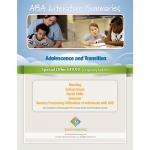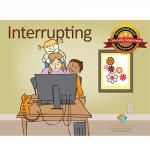Blog Categories
- ADHD
- Applied Behavior Analysis
- Autism Awareness
- Autism Service Providers
- Case Studies
- Dignosis
- Classroom Management
- Credentials
- Ethics
- Family Matters
- FAQs About LIVE Events
- Financial Planning
- Holiday Planning
- IEP's
- Panelists
- Private Equity in Autism & ABA Industry
- Psychopharmacology
- Sensory Processing Disorder
- Speech and Communication
- Subject Matter Experts
- Summer Planning
- Transition Planning
What is “Chronic Sorrow?”

At Step by Step Academy, Julie provides case management services and individual and group counseling to adolescents with Autism and their families. Her responsibilities also include development and delivery of training programs for parents and staff.
Julie graduated from Ohio State University in 2000 with a Bachelor’s Degree in Psychology. In 2003, she earned her Master’s Degree in Social Work (with a Clinical concentration and School Social Work specialization). Julie is a Licensed Independent Social Worker Supervisor (LISW-S) and holds a School Social Work (SSW) License from the Ohio Department of Education.
What is “Chronic Sorrow?”
Many people are familiar with the Five Stages of Grief as first defined by Elizabeth Kubler-Ross in her often referenced book On Death and Dying (1969). People do not always experience the stages in order, can get “stuck” in one stage for months or even years and grief is not limited to the actual loss of a person but can also apply to experiencing some kind of major life altering event.
The Five Stages are denial, anger, bargaining, depression and acceptance.
When parents first learn that their child has a disability such as Autism, a condition that they will have for the rest of their lives it is normal and natural to experience a grief response. Each parent grieves differently and individuals should be allowed to go through this process however they see fit.
However, there are many variables involved in how parents will respond to the diagnosis–Did it come as a complete shock? Do they have a strong support team of friends and family? Are they already experiencing other major life stressors (financial, mental health issues, medical concerns, etc.)? There is no “one size fits all” appropriate way to grieve and unfortunately, parents are often told how they should grieve (“Why haven’t you cried yet… you need to cry.” or “You have to get over this and move on. It’s not that bad.”)
More and more professionals who are providing the diagnosis (whether it is a pediatrician or psychologist) are realizing the importance of how they deliver the news. A kind delivery with thoughtful recommendations and referrals can make a world of difference. Also, making a referral does not mean handing the parent a few brochures or an outdated list of places to call. A well-informed doctor should suggest that the parent immediately contact their county board of developmental disabilities and request a service coordinator to help guide him/her through the process of accessing and identifying services.
Sociologist Simon Olshansky first coined the phrase “chronic sorrow” in 1962. Chronic sorrow is often experienced by parents and caregivers who have a child with a disability. He felt that the grieving did not ever reach a closing point and the intensity could increase during certain stages of that child’s life. For example, when an adolescent is making the transition to adulthood parents are often reminded that he or she is still very dependent on them and will be for the rest of their lives. They might compare this to their friends who have typical children going away to college and being able to relax a bit after years of childrearing.
This is not to say that Kubler-Ross or Olshansky are trying to imply that raising a special needs child is an overwhelmingly negative experience or that a parent will experience an extreme amount of grief. It is just important that we as professionals be mindful of the unique challenges our parents face. With those challenges also come great joy and many parents report they cherish the closeness they will always have with their child, perhaps a closeness that they would not have with a typical child.
RECOMMENDED PRODUCTS
Adolescence and Transition Bundle
Interrupting Social Story Curriculum








